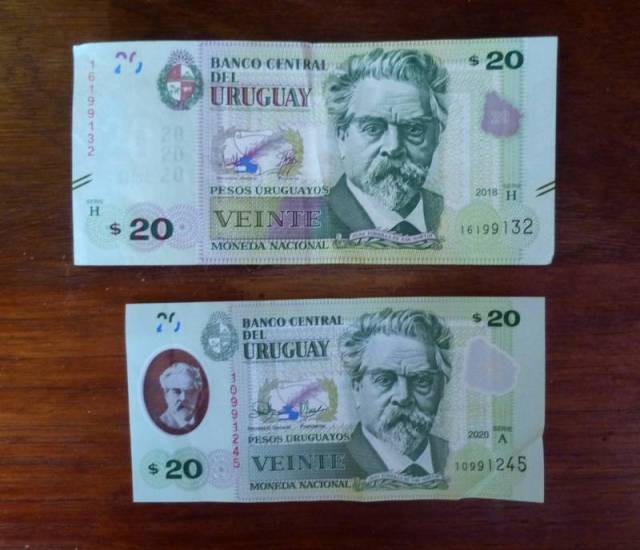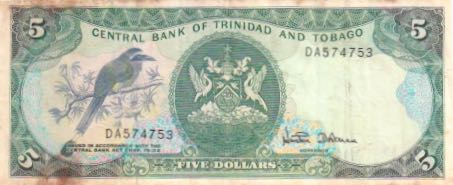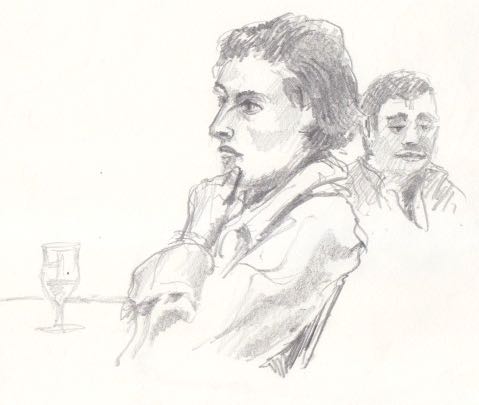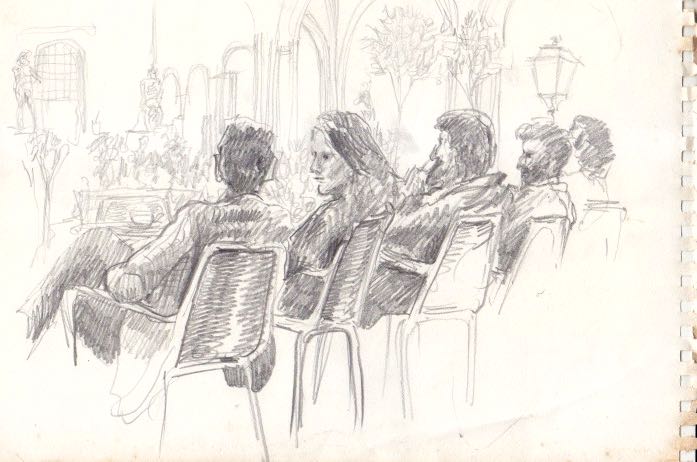
They’re not just shrinking the value of the money, they’re shrinking the money itself.
FWIW, the 20-peso dude is sculptor José Luis Zorrilla de San Martín.
An inquisitive old fart with a camera

They’re not just shrinking the value of the money, they’re shrinking the money itself.
FWIW, the 20-peso dude is sculptor José Luis Zorrilla de San Martín.
In 2017, Uruguay issued polyester 50-peso notes.

Unlike the previous notes, which were red, these 50th anniversary notes were blue.


And ugly in a brutal sort of way. Then in 2020, the polyester notes became red again.


There must be something about the 50-peso denomination that causes impishness. In 2011, they created a ridiculous and misleading 50-peso coin that nobody wants (an earlier blog post of mine).

Cleaning our unoccupied casita is an annual event I do every five years or so, whether it needs it or not. Among stuff that’s been floating around in there since my son left seven years ago is a Mexican 1,000-peso note.
I was reminded of preparing to move to Mexico from Spokane, Washington, in a pickup truck. I had fun giving things away: on Craigslist advertised a pile of post cards from my grandmother, few of which actually said anything, sent to us kids from around the world in the 1960s. Some stamp enthusiast eagerly took them. I has a small box of coins as well. Some I gathered while working a job in West Germany that took me to 14 countries, despite my goal of leaving each with no coins, and many more, also from my grandmother, including some WWII era aluminum ones from Italy. I took those to the closest elementary school late one afternoon, introduced myself to the principal, explained how these might be interesting for geography, history, math and more, and asked if he had a 5th grade teacher who might be interested. He did indeed.
Which got me thinking. The date on this bank note is in March of 1982. What was it worth then?
Well. It turns out that the Mexican peso had been devalued 30% a month before this note was issued, and it only got worse from there.

It was a very not-good year for holders of Mexican local currency units.

The room in which my tiny office space resides was recently repainted, which involved removing a bookshelf. After I replaced it, I realized I didn’t want all that stuff back on it. Including a little pile of journals I’ve kept off and on over the years. I think about getting rid of them, but they’re full of gems.

May 1991: my accelerated Mac SE operates at 20 MHz and has a 105 MB hard drive and a 19″ black and white monitor. Current: 5 year old Mac Mini operating at 2.3 GHz (115 times faster) with 500 GB hard drive (4,876 times greater capacity).

September 1993: my Mac IIsi has 17 MB of RAM. Current: 16 GB (964 times more). That was the computer I used to put together Post Card Passages. Each full-page image required 32 MB, so every time I made a change to an image it switched to virtual memory, and I’d listen to the hard drive chattering for several minutes. Maybe go to the kitchen and brew a fresh pot of coffee.

In a later one, a page bookmarked by a $5 bill from Trinidad and Tobago.
In 1989, I served on the board of the Northwest Association of Book Publishers.
“Special Bylaws. Meeting #3 (or is it 4?) — like doing jury duty. Wrote ‘Another way of looking at Professor X’ afterwards:
A silent moan when X is found
at monthly meetings of our board,
his academics to expound
with functionality ignored.”
I don’t remember who Professor X was.
And going back to the mid 1980s, sketches from Florence, Italy.



This probably from home, Hochheim am Main, West Germany.

So *sigh* guess what has just gone back on the bookshelf